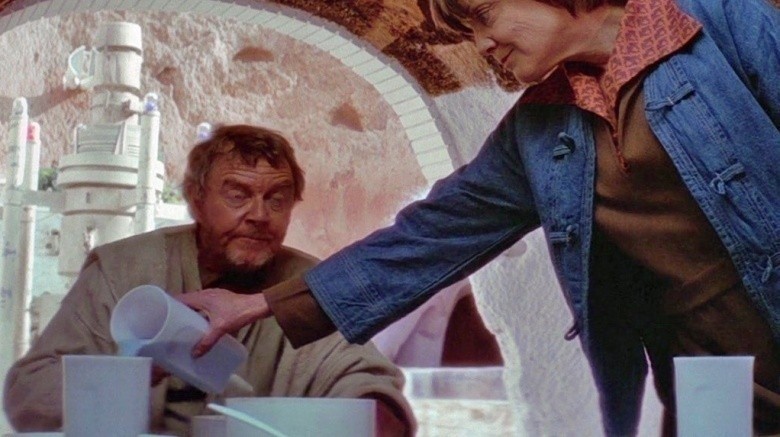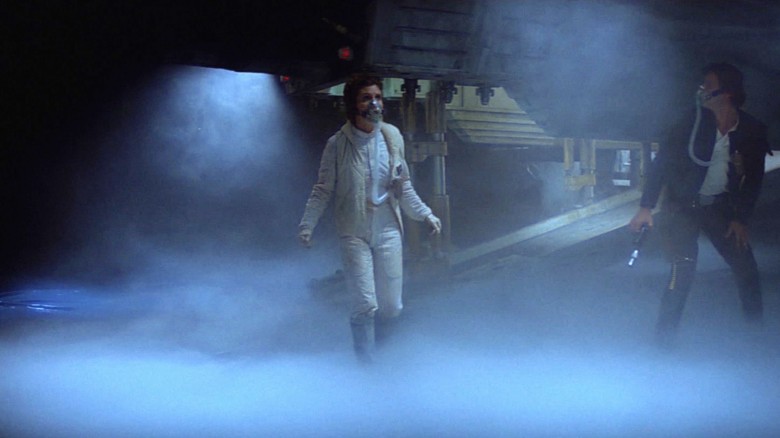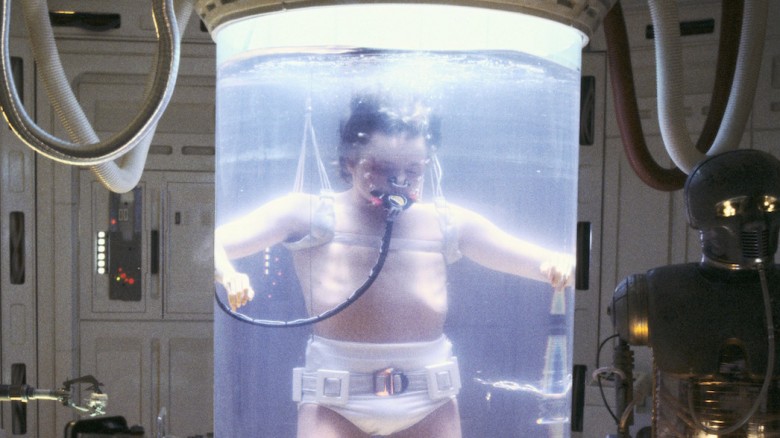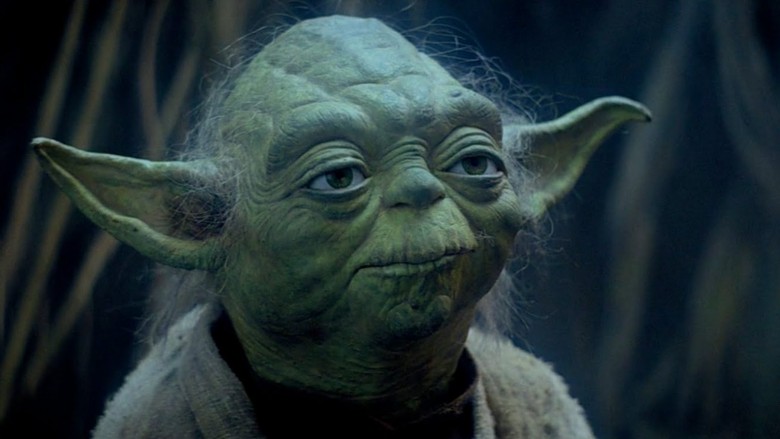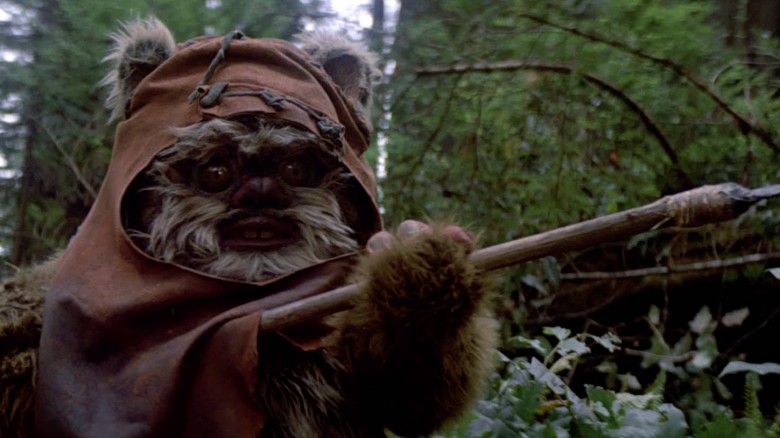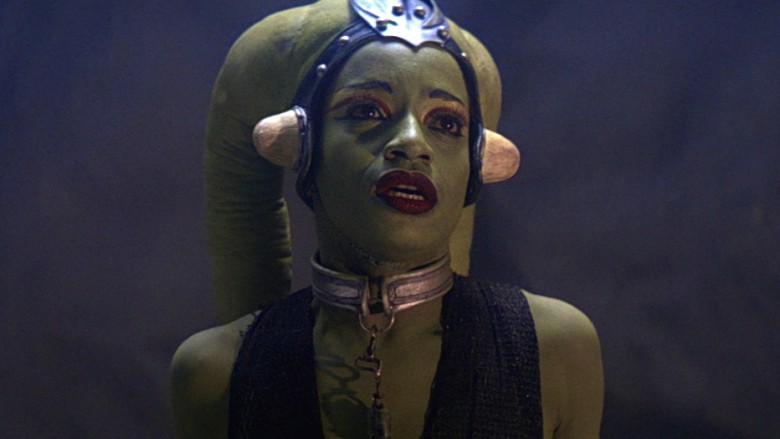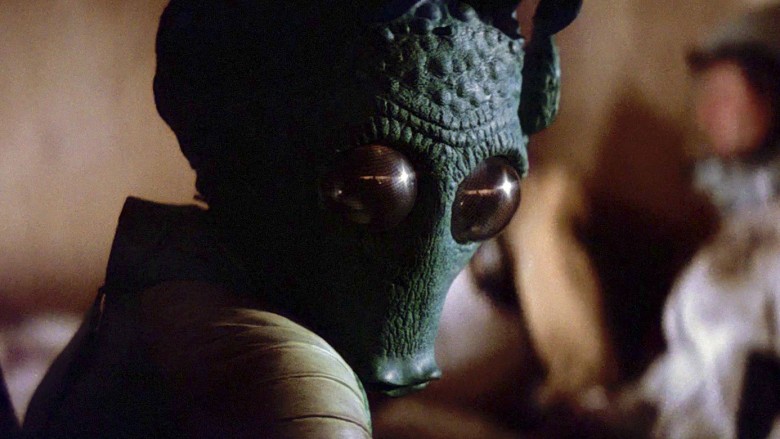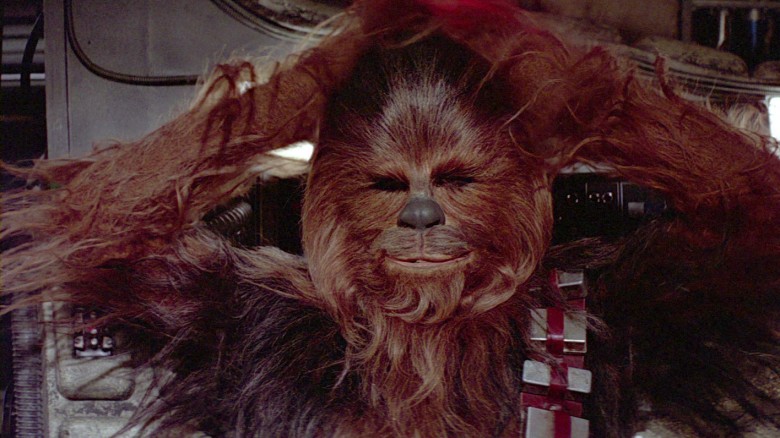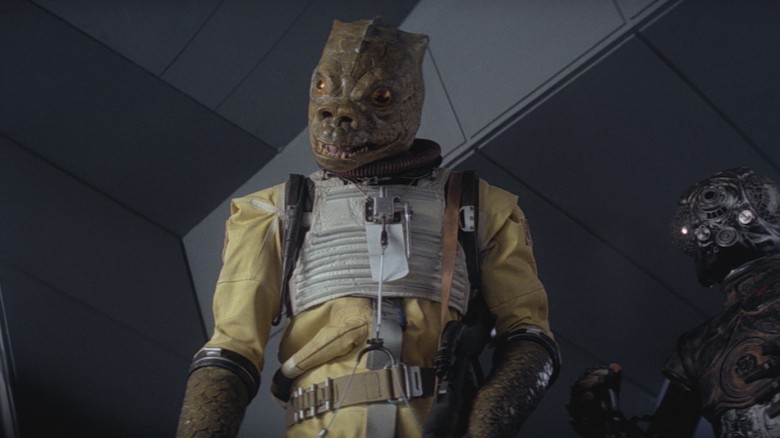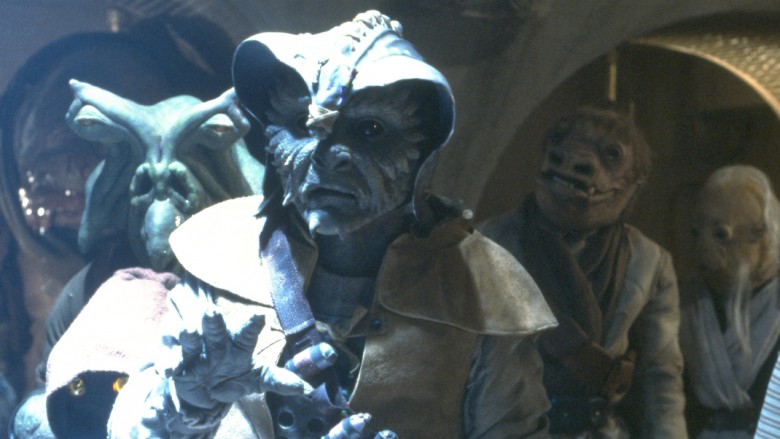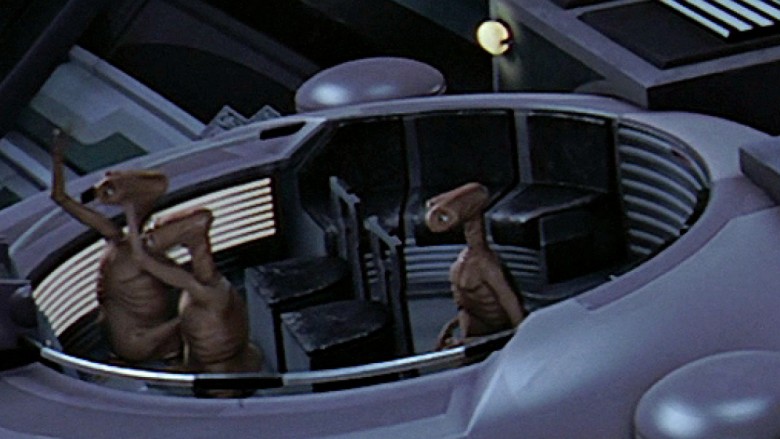Star Wars Creatures - 11 Facts You May Not Know
George Lucas' galaxy far, far away is an expansive place filled with curious wonders and amazing alien species. Ranging from the bizarre—such as angry hand-claw creature "Dice Ibegon" from the Mos Eisley Cantina—to the adorable, like the tree-dwelling Ewoks, Star Wars sure loves its outlandish creatures. While much of the known universe is well-catalogued and detailed throughout numerous encyclopedias, wikis, and supplemental materials, there are still an amazing amount of fascinating backstories to discover about our favorite critters from the Star Wars realm.
Far more nutritious than Bantha poodoo
The twin-sunned world of Tatooine was home to two rather important characters in the Star Wars universe: Luke Skywalker—who subsequently declared his intention to never return home, before doing just that—and everyone's favorite sand-hatin' Sith, Anakin Skywalker. Be that as it may, the Outer Rim planet certainly is actually a long way from the "bright center to the universe."
The desert world boasts a minimal population, primarily contained to spaceports and other hives of "scum and villainy" like Mos Eisley, or scattered enclaves of migratory groups like the Tusken Raiders and the Jawas, in addition to the ubiquitous moisture farmers (about as thankless an agrarian gig as you might find). It's also home to a number of interesting critters, including the Bantha, whose most famous byproduct might be its "poodoo"—commonly used as a curse throughout the galaxy, but also responsible for another famous Star Wars beverage. No, we're not talking about the Old Fashioned Phasma: it's blue milk. Yep, those space-aged plastic cups Luke, Uncle Owen, and Aunt Beru are sipping contain Bantha milk .
Can't you almost picture the Tatooine Dairy Council's commercial? Darth Vader, red lightsaber poised for the kill, sporting a blue milk mustache across his death's head mask. Bantha milk: it does a Jedi good.
Space worms are easy (to construct)
Few audiences will ever forget the classic Empire Strikes Back sequence in which Han Solo quips "never tell me the odds" before foolhardily zigging and zagging the Millennium Falcon through an asteroid field. The drama climaxes as he tilts the Falcon sideways through a tight canyon, causing two TIE fighters to collide in a fiery explosion, before flipping the Falcon over and soaring into a cave. Even the skeptical Princess Leia had to be mildly impressed (or not).
Once inside, they set to work, only to discover their perfect hiding spot isn't so perfect. The scenes in which Leia, Han, and Chewie pick off Mynocks also happens to be the cheapest set created for Empire. According to John Knoll's book Celebrating the Worlds of Star Wars 365 Days, the space slug (or Exogorths in the official parlance) set was created by draping curtains around the Millennium Falcon, laying down a bunch of black plastic sheeting, and cranking up the fog machine. Scientific curiosities aside (why do space worms have any sort of atmosphere despite living in the vacuum of space?), George Lucas must have been stoked for such a low-budget set after taking out a massive loan to finance Episode V.
The Wampa wasn't a car-wreck cover-up
Despite having nearly a dozen movies under the Star Wars aegis, some unsubstantiated behind-the-scenes stories from the original trilogy remain. In the days before everything was recorded, slapped up on YouTube and spun around Facebook and Twitter, the real story was often much harder to come by (or was it?). One such classic myth, which revolved around everyone's favorite one-armed abominable snowman, the Wampa, came into existence as a way to explain away purported damage to Mark Hamill's face, sustained during a car accident.
At this point, there's only anecdotal evidence to support the car crash itself (we believe you, Mark). Furthermore, Hamill had shot Corvette Summer at least several months after the reported accident without any screenplay modifications to the teeny-bopper flick because of any major facial damage. George Lucas himself refutes the cinematic urban legend in the film's own DVD commentary, stating that the ice creature's attack was already part of the script.
Long story short: don't blame the Wampa.
The Force is strong with Buffy?
Don't get us wrong, Buffy is a badass name, especially if you're hunting for nasty vampires in Sunnydale, California. Nonetheless, somehow the wizened advice of one little green alien just wouldn't sound the same if it came from the mouth of a swamp-dweller named "Buffy."
That's right, the learned Jedi Master Yoda—the guardian of Force-based knowledge and instructor to thousands of Knights, whose career spanned nearly 900 years—was originally named Bunden "Buffy" Debannen. Later drafts de-yuppified the character, naming him Minch Yoda, before cutting the first name entirely. Fans (and Lucas) certainly dodged a bullet, but there are still a plethora of mysteries about Yoda and his as-yet unknown species, including why Lucas thought it was ever a good idea to cast a monkey wearing a mask to play him. Thank goodness that plan fell apart.
What part of Nepal is 'Yub nub'?
Most devotees are familiar with Return of the Jedi's tale of two tree cities—or how a Wookiee-based battle sequence was literally squashed into the Endor-dwelling Ewoks, because Wookiees were too technologically advanced (after all, Chewie fired a modern weapon and flew the Millennium Falcon quite handily) to be considered primitive. Once the decision was to swap out cultures was made, though, the Ewoks were given a rich history, thanks to Star Wars' sound guru Ben Burtt.
When creating the Ewoks' spoken language, the sound designer combined elements from several different languages. Known as "Ewokese," the dialect the daughters and sons of Endor employ is a combination of Tibetan, Kalmyk (originally from the Mongolian region), and Nepalese.
Another curious fact: the word "Ewok" is never spoken throughout the entirety of Return of the Jedi. There is also no truth to the rumor that "Ewok" means light snack on Endor (just ask the nearly-barbecued Rebel landing party about that one).
Jabba's very revealing dancer
Some of us remember a simpler time, before the dawn of the Empire and the debate over whether Han Solo shot first. In those glory days, the goofy but lovable "Lapti Nek" filled the bounty hunter and murderer-infested palace of Jabba the Hutt with laughter and music. The lovable ten-ton crime lord also kept an enslaved Twi'lek dancer named Oola chained to his love seat, forcing her to dance to the disco-funk of Sy Snootles and the Max Rebo band. In one scene during Return of the Jedi, audiences saw the two creatures argue—a fight that revealed the depths of Jabba's control issues while also revealing a little more of actress Femi Taylor than initially intended.
When the fight escalates into a struggle for survival, the dancer flails so hard that one of her net-cups failed to do its job, exposing her green breast to audiences (cool it, Captain Kirk). After Lucasfilm spent millions of dollars making Boba Fett look like a player and splicing a Force-ghost version of Hayden Christensen into the Rebel's final shindig, nobody thought to use a smidgen of the budget to cover up Oola's wardrobe malfunction?
Gender bending with Greedo?
Few debates of original trilogy lore are more divisive than whether Han shot first—or more importantly, whether he should have shot first. Beyond that can of worms, however, lives a fun fact about the everyone's favorite ineffectual bounty hunter.
Greedo was actually played by two people, and one of them was a woman. Initially, the classic sequence in the Mos Eisley Cantina was shot in the United Kingdom, using actor Paul Blake. Later, several sequences were reshot in Canada, this time with actress Maria De Aragon as the spiky Rodian "gunslinger." Neither of the actors get credit for his classic line—spoken in Huttese and translated to "Going somewhere, Solo"—since linguist Larry Ward had the honor of vocalizing the green mercenary.
Deep in the heart of Kashyyk
Arguably, one of the most "human" characters throughout the original trilogy is the Kashyyk native Chewbacca. Despite being unceremoniously referred to as a "thing" and a "walking carpet" in Star Wars: Episode IV – A New Hope, Chewie's huge heart often acts as Han Solo's conscience—even if he sometimes thinks with his stomach. Chewie's species itself, however, has a curious origin in a very different land: Texas.
The Wookiees apparently got their name from a chunk of ad-libbed dialogue, according to a DVD extra from George Lucas' first film, THX-1138. Sound designer Walter Murch relates a tale about a disposable piece of background dialogue, blurted out by actor and DJ Terry McGovern, who at one point can be heard saying, "I think I just ran over a Wookie," a shout-out to his buddy Ralph Wookie from Texas. The actor said he thought his friend would "get a kick out of hearing his name in a film." Little did he know he and his friend would later be immortalized in Star Wars lore.
While we don't know what this infamous Texan actually looks like, it's certainly difficult not to imagine him as a gargantuan, fur-covered creature from this point forward.
Bounty Hunter for the RAF?
The Empire Strikes Back is loaded with amazing science fiction moments. Between the lush sequences shot in orangy-pink Cloud City, the Rebel rout on frigid planet Hoth, or the hunt for the Millennium Falcon through an asteroid field and beyond, director Irvin Kershner created a series of memorable backdrops for this installment in the saga. One of the highlights, which launched a thousand Legends stories, is a brief scene aboard Darth Vader's flagship, the Super Star Destroyer Executor.
The Sith Lord, frustrated with his officers' lack of progress with regards to capturing Han Solo and his associates, employs a gaggle of bounty hunters, including the infamous Boba Fett ("no disintegration"). The sequence also introduces the memorable reptilian mercenary Bossk, who responds to Admiral Piett's distaste for bounty hunters with a guttural retort.
Little did Piett know that the yellow Trandoshan, or at least his spacesuit, had a serious pedigree. Not only was the getup featured on the 1966 Doctor Who serial The Tenth Planet, but it originated as a High-Altitude Windak Pressure Suit, worn by the United Kingdom's Royal Air Force during the '60s. Franchise-wise, Bossk wasn't the first one to rock this suit, either. Cantina-dweller Bo Shek wore an alternative version during A New Hope, while later, several A-Wing pilots donned the suit while battling the Imperial fleet in Return of the Jedi.
The day Jabba's palace stood still
Return of the Jedi brought the vaunted original trilogy to its Ewok-assisted conclusion. It also returned Luke Skywalker to the one place he really wasn't interested in revisiting, Tatooine. At the same time, when your buddy gets frozen into a block of carbonite just so your dad can entrap you, you have to make a few sacrifices to save him. Jabba the Hutt, after capturing Luke, Leia, and a thawed-out Han in his palace, decided to throw a party around their execution, bringing along a flotilla of his closest business associates (do Sarlacc execution soirees count as a business expense?)
The delightfully desolate Pit of Carkoon wasn't a holiday for everyone on board, though. Aside from roving bartender R2-D2, there were a number of working stiffs among the revelers, as well as several Jabba employees that were also references to the classic science fiction film The Day the Earth Stood Still—including two of his Nikto workers, Klaatu and Barada, whose names refer to a robot "safe word" of sorts from the 1951 film. After getting shot up by the markedly reactionary U.S. Army, Michael Rennie's alien character, Klaatu, informed his Earthly comrades that the only way to disable his giant killer android Gort was to utter the phrase "klaatu barada nikto." In Jedi, though, neither characters (nor any other of Jabba's entourage) make it out of the desert alive.
George Lucas clearly wasn't the only fan of this classic film, as anti-hero Ashley "Ash" Williams has to speak the same words to halt the spread of the evil dead in Army of Darkness—something he totally does...well not exactly.
Did E.T. phone home to Coruscant?
Since the dawn of cinema, one thing has been made quite clear: filmmakers love Easter eggs. Aside from homages, pastiches, and direct ripoffs, many screenwriters and directors include fun little nods to the artists that influenced them, as well as their contemporaries and friends in the industry. For instance, Wes Craven and Sam Raimi had a long history of including one-ups in their movies (Johnny Depp is watching Evil Dead before he gets sucked into the bed in Nightmare on Elm Street).
George Lucas and his close friend Steven Spielberg also have a long history of volleyed references. In E.T. the Extra-Terrestrial, a child goes trick-or-treating in a Yoda mask. To reciprocate, Lucas later referenced the childhood classic in Star Wars: Episode I – The Phantom Menace. During one of the first prequel's remarkably exciting legislative sequences, the camera sweeps across the Galactic Senate, lingering on a delegation of "Asogians," led by Grebleips (or Spielberg backwards) just long enough to "wink" at the audience.
Of course, this leads to a very curious and conspiratorial question: did the E.T. delegation vote for or against executive powers for Supreme Chancellor Palpatine—thereby kicking off the Galactic Empire? Perhaps there's more to this creature cameo than meets the eye.

